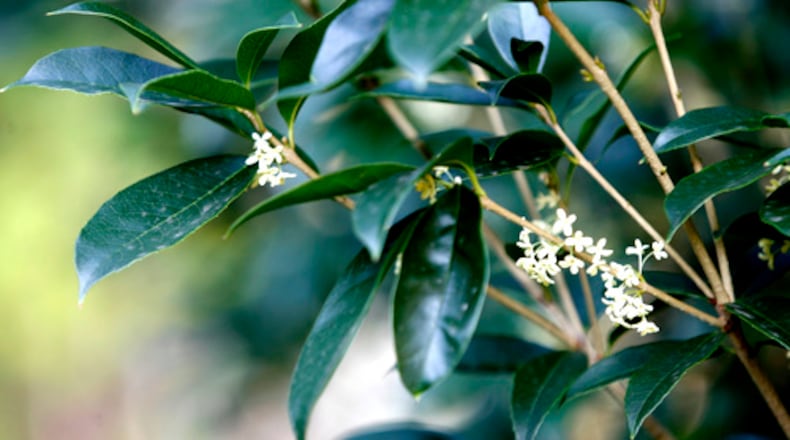Q: We have two banana shrubs in our garden. The cold temperatures this winter really gave them a whack. There are little green leaves coming out randomly from big limbs and little twigs. They are quite mature, but I don’t feel hopeful about a full recovery. What do you think? Fran Sommerville, Marietta
A: I am horticulturally conservative (and also lazy) when dealing with frozen plants. I wait until early May to try to rejuvenate them. We’re discussing banana shrubs here, but the same techniques could be applied to tea olive, Carolina jessamine and Confederate jasmine that were badly damaged by cold. Prune the victim down to 5 feet high, then inspect the limbs that remain for any signs of life. If a limb seems completely and utterly dead, remove it. But some limbs may have green buds or small emerging leaves. They can stay. Then wait to see what happens. My bet is that you’ll have a scraggly but hopeful-looking shrub by the first of September. You’ll definitely see limbs that have not survived. Remove them if you haven’t already done so in the course of the summer. Be sure to water in dry weather and keep the soil around the tree mulched. Around the first of May next year, you can start thinning limbs and twigs growing high in the plant to allow more sunshine to penetrate to the center. If you keep removing live but poorly placed limbs during the growing season, you’ll have a nice rounded shrub by summer’s end.
Q: I found an enormous oak leaf in my yard cleanup. I regularly have hand-size leaves but never one this large. Why are some oak leaves so big? Lori Rausch, Alpharetta
A: Shaded leaves tend to be larger than sun-exposed leaves. Is the tree in shade? Could it be that this was a leaf from the inner canopy? Young, excessively vigorous trees (or vigorous shoots on mature trees) tend to produce bigger leaves. First- and second-year acorn sprouts also make large leaves to more effectively compete with their larger siblings.
Email Walter at georgiagardener@yahoo.com. Listen to his occasional garden comments on “Green and Growing with Ashley Frasca” on Saturday mornings on 95.5 WSB. Visit his website, www.walterreeves.com, or join his Facebook page at bit.ly/georgiagardener for his latest tips.
About the Author
The Latest
Featured

